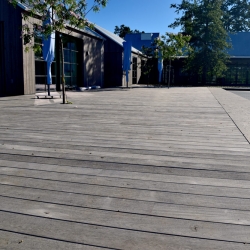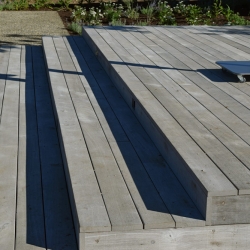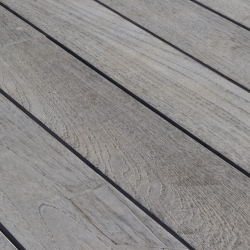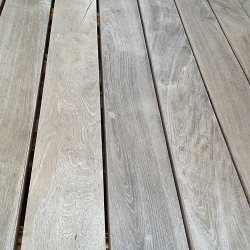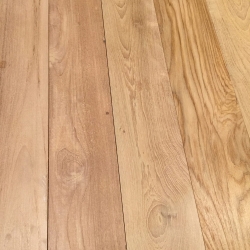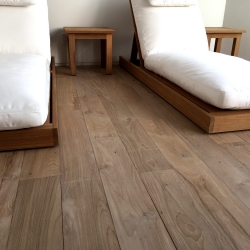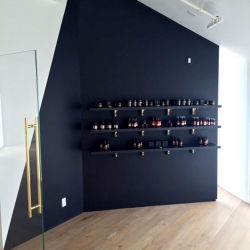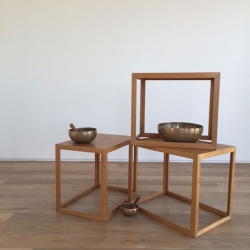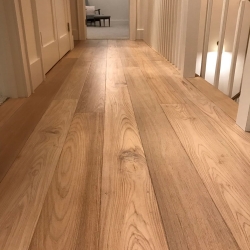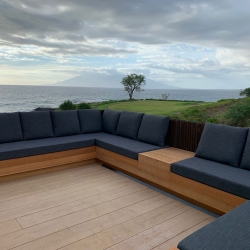Bolstered by a deep history, Reclaimed Teak commands resilience, endurance and has an ingrained legacy of continuing beauty.
Our Reclaimed Teak is sourced directly from colonial Dutch buildings in the south Pacific. In the 17th century, the Dutch empire realized that they needed a renewable source of resilient wood with which to produce their huge ships and barges. Teak has greater naturally weather-resistant properties than just about any other type of wood. Rich natural oils, Teak is easily worked, and dresses to a very smooth finish. Because of its natural oils, teak is also very durable and resistant to the drying effects of exposure to weather. This gave the Dutch the perfect building material with which to create a foothold in the region, without having to travel hundreds of miles, out of their empire’s borders.
Beautiful golden to dark brown tones
The high silica content in teak makes it an ideal wood to use when a slip resistant surface for decking
Natural oil makes the wood exceptionally resistant to mold and mildew
Rich in history and character
Over the decades the empires receded from the pacific islands, but left behind a rich resource, where native woodworkers used the newfound teak trees to create homes, factories, and other buildings. As these building aged and been torn down, the monsoons, humidity, and harsh daylight have weathered the paneling and beams with a soft-silver aged patina. As is typical to most reclaimed material, common reclaimed characteristics for teak include seasoned checking, knots, oxidized nail holes, rafter notches, and mortise pockets. The patina can also be removed to accentuate the golden honey browns that are natural to the species. The natural tight grain with thick fibers can be milled evenly without chipping or splitting, making teak a highly desirable wood for use in difficult conditions.


